- Top 10 Devops Tools
- Repository Management Tools
- 10 Tools For Effective DevOps Collaboration
- Top 12 Open Source DevOps Build Tools
- Configuration Management Tools in DevOps
- Agile Vs DevOps
- Chef DevOps Interview Questions
- What is Continuous Integration in DevOps?
- Insights of DevOps Architect
- DevOps Automation: How is it Carried Out?
- Introduction To DevOps Docker
- DevOps For Dummies
- DevOps Interview Questions
- 13 DevOps Testing Tools For DevOps Professionals
- Best DevOps Tools and Frameworks to explore
- DevOps Tutorial For Beginners: A Step-by-Step Guide To Learn DevOps
- Cacti Graphing And Monitoring
- RANCID Tool Keeps Config Files Clean
- How To Enable LLDP on Linux Servers for Link Discovery
- How to set up a modern web stack in Ubuntu
- Useful Iperf Commands for Network Troubleshooting
- Migration of MongoDB to DynamoDB
- MongoDB and Tree Structures
- Multihost SSH Wrapper
- DevOps Tools for Infrastructure Automation
- Introduction To Azure DevOps
- Introduction To DevOps Tools
- List of DevOps Monitoring Tools
- The Ultimate List of DevOps Deployment Tools
- Top 10 Open Source Containerization DevOps Tools
- Reasons for the Rise of DevOps
- Role Of a DevOps Engineer
- DevOps Security Tools
- Some Common Myths about DevOps
- Top 10 Devops tools in cloud
- Release Management Tools
- Top 10 SCM Tools
- Logging DevOps Tools
- DevOps And Its Significance
- DevSecOps Interview Questions
- Ansible vs Chef
- DevSecOps Tutorial
- What is Site Reliability Engineering - SRE Tools
- Site Reliability Engineer(SRE) Interview Questions
- What is DataOps?
- DevOps Vs SysOps
- DevOps Engineer Job Description
- Azure DevOps Jira Integration
- What is Pipeline in DevOps?
- SonarQube Azure DevOps
- Azure DevOps CI/CD
In today’s DevOps world, continuous delivery and deployment are significant in delivering high-quality software products faster than before. DevOps has high importance in many organizations in producing better software applications. An important element that acts as a center for automation of software development in DevOps is “Continuous Integration”.
Continuous Integration
Continuous Integration is a cornerstone software development technique of DevOps where developers continuously update the code and merge with the large respiratory database after the tests. Continuous integration is a process of building and testing stages of software release.
The key aim of the CI (continuous integration) is to improve software quality, find and address bugs quickly, and reduce the time it takes to validate and release new software updates. With the support of Continuous Integration, the unit tests build new codes and manipulate the errors quickly.
Want to enhance your skills to become a master in DevOps Methodology, enroll in our Learn DevOps Online Course
here is the continuous Integration list:
Types of Continuous Integration (CI) Tools in DevOps:
While many Continuous Integration DevOps tools are available in the market, only some of them are widely used. Here we will take a look at each of the DevOps tools in specific, and understand the intricacies of it. Based on its usage, we have also compiled some of the advantages of using it as well.
[ Related Article: Learn DevOps Tools ]
1. HockeyApp:
HockeyApp is the best tool for collecting crash reports, obtaining feedback from live users, distributing your beta version software, and also analyzing further the test coverage. HockeyApp provided by Microsoft, is one of the best software tools available in analyzing the mobile crash reports, app distribution for developers over iOS, Android, and Windows phones.
If you want to check the performance of your application on your own, the best possible way is to check with HockeyApp. Upload your application with Hockeyapp and monitor the application performance metrics like crash reports, live to report, and tracking customer metrics and customer feedback.
Following are some of the advantages of using HockeyApp. Let us now take a look at each one of them:
Advantages:
- Fully open-source and customizable
- Supports multiple platforms – iOS, Android, Windows Phone
- Availability of Jenkins plugin for HockeyApp for Continuous Integration
- Simple configuration, Simple SDK download, and simplistic integration plus distribution
- Comprehensive team management during the application distribution phase as well
2. Jenkins:
Jenkins is an open-source continuous integration automation server written in Java, and a widely used tool for the Jenkins Continuous integration builds and also for delivery pipelines. It offers configuration operations through both GUI and CLI interfaces. Junkin supports hundreds of plugins from its update center and these plugins support building and testing of any possible project.
Jenkins provides an integration development life-cycle that processes a document, test, package, deploy, and static analysis. Jenkins also provides alerting mechanisms like email, pop-up notifications and also can automate them further to get immediate feedback. You can always have all the details regarding build failures and code static analysis. Along with all of these wonderful features that Jenkins provides, it can also be used to distribute software builds and test loads on several machines.
Following are some of the advantages of using Jenkins. Let us take a look at them:
Advantages:
- It doesn’t require any further additional installations or components.
- Jenkins is completely platform-independent and hence can be used on any operating system like OSX, Windows, or even on Linux.
- With the plethora of plugins available, Jenkins makes it flexible in builds, deployment, and also in automation across various software platforms.
- Even though it is open-source, there is a strong community that supports all the online help that you require on Jenkins
- With Jenkins, developers can also concentrate on Test-driven development to build on the software quality of the product.
- One of the key advantages of Jenkins is that it requires the least maintenance and also that it has inbuilt GUI tools that provide easier access and updates.
[ Related Article: Learn DevOps Interview Questions and Answers ]
3. Apache Gump:
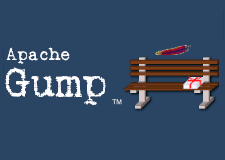
Apache Gump is another Continuous Integration tool that is written purely in Python. This was earlier written in Java but then was entirely re-written in Python to cater to the needs of Continuous Integration and now is written in a manner to support a majority of the build tools. It is designed entirety to ensure that projects are compatible at both the API level and also at the functionality level.
It is very easy for Apache Gump to identify the incompatible modifications to that specific code within the shortest span of time after they are committed to the Version Control Systems. As soon as a modification that caused an issue is identified, it will automatically send the notifications to alarm about the change. Provides additional reports to the users online to take further corrective actions to ensure a better quality of the product as such.
Following are some of the advantages of using Apache Gump, let us take a look at them.
Advantages:
- One of the key advantages of using Apache Gump is that it is completely an open-source technology
- This tool has got the backing of a strong community to support the product in the form of Apache
- Identifies and alarms on potential issues caused by the commit from an individual in a Version Control System.
4. Buildbot:
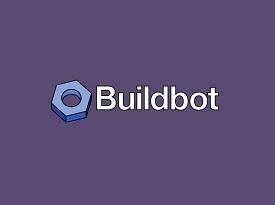
Buildbot is another open-source Continuous Integration tool that provides automation on software, building, integration, and testing processes. Buildbot provides support to various operating systems like Linux, Windows, OSX, and BSD. Buildbot was also considered to be a perfect alternative to Mozilla’s Tinderbox project. It also provides Source Code Configuration Management (SCM) integrations with Git, SVN, CVS, Mercurial, Monotone, and BitKeeper.
Following are some of the advantages of using Buildbot, let us now take a look at each one of them:
Advantages:
- Inherits all the benefits of Python Buildbot is also available in Gentoo.
- Higher integration tools
- You will find the documentation a bit incomplete, but once you find it regarding the installation – it is a smooth process to install Buildbot.
- Quite easy on the maintenance when on Production
- Intuitive bash scripting through APIs
- Provides the choice of creating the additional feature that you want on your Continuous Integration server a possibility whereas the other tools don’t provide such a feature.
5. Bamboo:
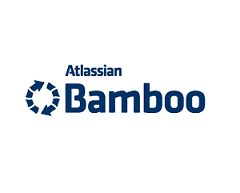
Bamboo is an Integration tool that is developed by Atlassian and it is applicable in two versions – Cloud Version and the Server Version. Atlassian’s Bamboo Cloud offering comes with a hosting service from Amazon’s EC2 account and Atlassian’s Bamboo Server offering comes with a self-hosting. Bamboo is one of the offerings from Atlassian like JIRA, Confluence, Crucible, and BitBucket. Bamboo ties automated builds, tests, and releases all of them together as a single workflow. It also does provide deeper integration with other Continuous Integration or build tools like Jenkins providing end-to-end visibility into an Organization’s implementation of software code and its relative quality.
It provides wonderful support to Workflow based projects and it does manage all the builds and tests. Workflows are then organized within Bamboo as Plans that do contain one or more jobs, including one or more tasks. Bamboo does support its execution of running tasks – like running automated tests in parallel and stuff. With Bamboo and specifically for an Organization that already heavily relies on Atlassian is the best choice as it gives a complete integration and ensures that you don’t have to look for a better tool than this for your DevOps implementation.
Following are some of the advantages of using Bamboo, let us now take a look at each one of them:
Advantages:
- View builds and releases that are specifically related to issues
- Run builds in JIRA with no other inputs
- Display build/deploy reports in JIRA and Confluence directly
- View the code changes that are made and also the reviews that are related to issues and builds directly as well.
- Release code that uses Maven as the release plugin.
- Provision to add 3rd party add-ons to your existing Bamboo environment.
- If the add-on that you look for isn’t available, then you could very well create that and use it without any further issues as such.
[ Related Article: What is DevOps ]
6. CircleCI:
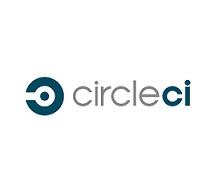
CircleCI is a Continuous Integration platform that does all the automation on the build, test, and deployment processes of software code for an Organization. Its sole and whole purpose is to enable the development teams to enhance the rate at which the software projects are delivered while at the same time also facilitating extreme scalability. That being discussed, CircleCi also supports the DevOps Docker platform.
CircleCI is a Continuous Integration tool that is hosted on GitHub and supports various languages like – Java, Python, Ruby/Rails, Sinatra, Clojure, PHP, Node.js, Haskell, and Scala. Circle CI provides one container free, where a large number of projects can be built without any restrictions.
[ Related Article: Scala Programming Tutorial ]
The main features of CircleCI can be listed as the following:
- Quick and an easy setup process
- Provides integration abilities with a range of tools
- Configurable workflows and provides all possible tests.
- The process of testing in itself and a guarantee of failing less.
Following are some of the advantages of using CircleCI, let us now take a look at each one of them:
Advantages:
- CircleCI is universal and very easy to configure it as well
- Provides an ability to integrate with existing cloud services
- A configuration of the integration server is simplified to the lowest level possible, where these changes are just small modifications is the YML files
- Deployment and the build pipeline get along with your code and also getting committed as part of your code commit to VCS.
- Provides integration with Docker – CircleCI 2.0 is all about Containers
- Easier to navigate and alarms on failures enabling us to see at which stage because of which code commit a build or a deployment pipeline failed
- Workflows and Pipelines are highly Customizable and Configurable.
7. GitLab CI:
GitLab CI is a web-based application that helps for the overall software development lifecycle. It is produced from GitLab.com as a free hosting service. GitLab offers features like bug tracking, access control, and code reviewing. GitLab CI is completely associated with GitLab respiratory management as it is very easy to use to link projects via GitLab API. Built using the Go language, GitLab CI has the ability to execute on various operating systems like Windows, Docker, Linux, FreeBSD, and OSX.
Following are some of the advantages of using GitLab CI, let us now take a look at each one of them:
Advantages:
- GitLab Continuous Integration (CI), Continuous Delivery (CD) is an integral part of GitLab
- The learning curve is pretty flat whereas the topics are all covered in detail in the quick start guides
- GitLab Continuous Integration / Continuous Delivery offers the same experience as GitLab, which are familiar, easy to use and all beautiful.
- Tests run distributed on separate machines, which can be added at any point in time – scalability of the machines
- Each of the builds can be split into multiple jobs which can run in parallel on multiple machines to provide faster results
- Continuous Delivery is achieved in multiple stages, environments and can be done in manual deployments. Both the CI and CD features are included in both the open-source GitLab Community Edition and also in the proprietary Enterprise Edition.
[ Related Article: Tutorial Gitlab ]
8. Go CD:

Go CD is a Continuous Integration tool that is developed by ThoughtWorks and the same is available for Windows, OSX, and Linux operating systems. Complex build workflows are made simpler with the concept of Pipelines. Since the application is built from scratch, it provides support to Pipelines pretty well and thereby also removes the build process blockages and bottlenecks via parallel execution of tasks.
Following are some of the advantages of using Go CD, let us now take a look at each one of them:
Advantages:
- The tool allows you to resolve the dependency resolutions hence allows you to run the repeatable jobs or builds and thereby reduces the amount of re-work that has to be done in turn.
- Provides built-in test reporting which is very nice
- It is super easy to install and maintain this tool in specific
- Provides a lot of REST APIs which makes further automation as easy as a breeze
- Provides a pretty clean UI which makes it very easy to visualize the place where you are in the Pipeline
- It also provides a feature to extract a template from the existing pipelines and also helps to add new projects super quickly.
9. Travis CI:
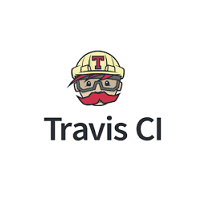
Travis CI, a continuous integration tool, hosted by GitHub to build and test open-source software projects. Configuring Travis CI is done by inserting a file named *.travis.yml to the root directory of your GitHub repository. This file contains all the actionable data that will be verified and validated whenever the execution of a job or a build happens.
Travis CI supports a variety of software languages, and the build configuration for each of those programming languages is also complete. The design of Travis CI was all focused on Developers to let them the code and at the same time, runs tests and deployments. This automation setup enables quicker, simpler, and agile delivery for software teams as well. Travis CI is free to use for open-source projects, and there are paid plans for commercial and private projects.
Following are some of the advantages of using Travis CI, let us now take a look at each one of them:
Advantages:
- Travis CI outshines so well that set up almost anything would be possible locally via your terminal.
- Documentation is pretty self-explanatory, even the newbies can follow the configuration on this tool of DevOps space
- Integration with GitHub is pretty well executed, where we can see how the build progresses and also makes us aware of any known issues (if any).
- Allows a pretty awesome feature to be able to put a badge on your website whether the build is passing or not.
- Provides built-in support to vendors like Heroku
- Travis CI really shines on the support that they provide on the languages and as well as capabilities
- Provides an awesome UI (a dashboard actually) that allows us to check the status of the previous 6-7 projects and their corresponding statuses at the same time.
10. TeamCity:
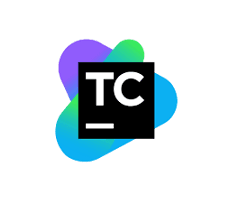
TeamCity is an open-source Java-based build management and Continuous Integration tool. This tool in specific supports programming languages like Java, Ruby, and .Net. There are a lot of inbuilt plugins available from third parties which comes at no cost with TeamCity. It Provides extensible integration with the help of various IDEs like IntelliJ IDEA, Eclipse, and Visual Studio.
A provision to run multiple builds, tests on various environments and platforms at the same time. There is an availability of a free tool for open-source projects and comes with a flat licensing fee for bigger commercial projects. The tool comes bundled with a dashboard that provides a report on the current build progress, provides a drill down on the detail and history of any given project or configuration. It is a mature, feature-rich toolset for continuous integration that enables developers to build sophisticated automated builds in a timely fashion.
Following are some of the advantages of using TeamCity, let us now take a look at each one of them:
Advantages:
- TeamCity comes with a neat and clean UI and also with good navigation on it.
- TeamCity is one of the most powerful tools that can be used for Continuous Integration and Continuous Deployment to a Production environment.
- It comes with a very simple setup process and also the ability to configure more parameters
- The existing functionality of the tool can be enhanced further with the available plugins for free
- Documentation for the tool is very much self-explanatory
- Comes along with features like Detection of tool versions, support to various test frameworks, code coverage and static code analysis, and the like.
Conclusion:
The trend for DevOps integration tools has been increasing over time, so, it is a must for you to keep observation on the changes. Hope this blog has helped you in exploring different tools and concepts of DevOps continuous integration.
Explore DevOps Sample Resumes! Download & Edit, Get Noticed by Top Employers! Download Now!
 On-Job Support Service
On-Job Support Service
Online Work Support for your on-job roles.

Our work-support plans provide precise options as per your project tasks. Whether you are a newbie or an experienced professional seeking assistance in completing project tasks, we are here with the following plans to meet your custom needs:
- Pay Per Hour
- Pay Per Week
- Monthly
| Name | Dates | |
|---|---|---|
| DevOps Training | Dec 16 to Dec 31 | View Details |
| DevOps Training | Dec 20 to Jan 04 | View Details |
| DevOps Training | Dec 23 to Jan 07 | View Details |
| DevOps Training | Dec 27 to Jan 11 | View Details |

Ravindra Savaram is a Technical Lead at Mindmajix.com. His passion lies in writing articles on the most popular IT platforms including Machine learning, DevOps, Data Science, Artificial Intelligence, RPA, Deep Learning, and so on. You can stay up to date on all these technologies by following him on LinkedIn and Twitter.
















